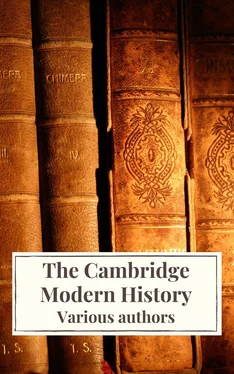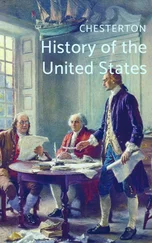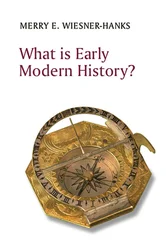R. Nisbet Bain - The Cambridge Modern History
Здесь есть возможность читать онлайн «R. Nisbet Bain - The Cambridge Modern History» — ознакомительный отрывок электронной книги совершенно бесплатно, а после прочтения отрывка купить полную версию. В некоторых случаях можно слушать аудио, скачать через торрент в формате fb2 и присутствует краткое содержание. Жанр: unrecognised, на английском языке. Описание произведения, (предисловие) а так же отзывы посетителей доступны на портале библиотеки ЛибКат.
- Название:The Cambridge Modern History
- Автор:
- Жанр:
- Год:неизвестен
- ISBN:нет данных
- Рейтинг книги:4 / 5. Голосов: 1
-
Избранное:Добавить в избранное
- Отзывы:
-
Ваша оценка:
- 80
- 1
- 2
- 3
- 4
- 5
The Cambridge Modern History: краткое содержание, описание и аннотация
Предлагаем к чтению аннотацию, описание, краткое содержание или предисловие (зависит от того, что написал сам автор книги «The Cambridge Modern History»). Если вы не нашли необходимую информацию о книге — напишите в комментариях, мы постараемся отыскать её.
The first series was planned by Lord Acton and edited by him with Stanley Leathes, Adolphus Ward and George Prothero.
The Cambridge Modern History Collection features all five original volumes:
Volume I: The Renaissance
Volume II: The Reformation, the End of the Middle Ages
Volume III The Wars of Religion
Volume IV: The 30 Years' War
Volume V: The Age of Louis XIV
The Cambridge Modern History — читать онлайн ознакомительный отрывок
Ниже представлен текст книги, разбитый по страницам. Система сохранения места последней прочитанной страницы, позволяет с удобством читать онлайн бесплатно книгу «The Cambridge Modern History», без необходимости каждый раз заново искать на чём Вы остановились. Поставьте закладку, и сможете в любой момент перейти на страницу, на которой закончили чтение.
Интервал:
Закладка:
When the century was ending, Trithemius, Abbot of Sponheim, celebrated Cusanus as an angel of light appearing to the fatherland. He restored, said Trithemius, the unity of the Church and the dignity of her Head; his mind embraced the whole circle of knowledge. The Cardinal, while not disdaining the tradition of the Schools, had busied himself in Italy with Plato and Aristotle; he encouraged the study of the classics, during his embassy to Constantinople collected Greek manuscripts, and won a reputation in astronomy and physics which entitles him to be named as a forerunner of Copernicus. With George Peurbach and John Müller of Königsberg, who died Bishop of Ratisbon, he kept up a correspondence on scientific and literary topics. His designs for the exaltation of the imperial power, though somewhat chimerical, stamp him as a patriot who would have prevented by timely changes the disorders which Charles V, a Fleming or a Spaniard rather than a true German Emperor, could not overcome. But he failed in politics, and his other reforms bore little fruit. Of the hundred and twenty-seven abbeys which accepted his statutes, not more than seventy observed them in 1493.
Cusanus had been appointed Bishop of Brixen directly by the Pope, without the local Chapter being consulted. This was a violation of the Concordat, and the Chapter appealed to Archduke Sigismund, Count of Tyrol. But the Cardinal was peacefully installed; and when he came back from his legatine mission in 1452, he set about reforming his diocese, which stood greatly in need of it. He began with a visitation of the convents. At Brixen he turned the unruly Sisters out of their, house. The Benedictine nuns of Sonnenburg pleaded exemption and, like the Chapter, called upon Sigismund who, though notorious for his profligacies, took up their defence. Very unwisely, Cusanus, by way of answering the Duke, laid claim to a temporal jurisdiction and enforced it by anathema and interdict, which were little heeded. The Tyrolese detested strangers and wanted no reform. In 1457 the Cardinal fled from Wilten, declaring that his life was in danger: Calixtus III interdicted Sigismund; and the Duke, prompted by Heimburg, a lifelong enemy of the Holy See, appealed to the Pope better informed. This did not avail with Cusanus. He proceeded with his censures, hired troops out of Venetia, and cut to pieces a band of forty men who were in the pay of the Sonnenburg Sisters. In 1459, Pius II undertook to mediate. He was not successful. On the contrary, Sigismund, who had pleaded his own cause in Mantua, went away dissatisfied and was preparing an appeal to a future Council, when Pius launched the bull Execrabilis (January, 1460), by which all such appeals were condemned and forbidden. Here, we may remark, is evidence of the motives on which the Popes distrusted Conciliar action, because, if it could be invoked at any time and for any reason against them, their jurisdiction was paralysed.
A year later the Duke made the Cardinal his prisoner at Bruneck, and demanded a surrender of the points in dispute. Cusanus yielded, escaped, fled to Pius at Siena, and cried aloud for satisfaction. The Pope, after fruitless negotiations, excommunicated Sigismund, laid his dominions under interdict, and brought Gregor Heimburg once more into the field, who drew up a formal appeal to the Council. A war of pamphlets followed, bitter in its personalities on all sides, but especially damaging to Pius II, whose earlier years were little fitted to endure the fierce light of criticism now turned upon them. Heimburg’s language, though moderate, was unsound from the papal point of view; it was coloured also by his personal dislike of Aeneas Sylvius Piccolomini, with whomlhe had a long-standing quarrel. “Prelates of Germany,” he exclaimed, “insist on the Council as the stronghold of your freedom. If the Pope carries it, he will tax you at his good pleasure, take your money for a Crusade, and send it to Ferrante of Naples.” The Bishop of Feltre replied on behalf of Pius, while the German princes took part with Sigismund. No one regarded the interdict. Diether of Mainz, after being excommunicated and deposed, took up arms against the Curia, and a miserable war laid waste Germany. The Cardinal’s death brought his troubles to an end in 1464. Heimburg passed over to George Podiebrad and the Bohemians, only at last to seek reconciliation with Rome. Sigismund received absolution. The Curia triumphed in the conflict at Mainz. An interval of quiet followed, during which the movement of learning went its way prosperously and religion kept the peace with humanism.
This humanism or, as it may be termed, the earlier Renaissance, flourished at many centres. Realist and Nominalist were of one mind in promoting classical studies, although Ulrich von Hütten has persuaded the world that Cologne, the head-quarters of monasticism and the Inquisition, loved to dwell in Egyptian darkness. The inveterate quarrel, which is as old as Plato, between poets, or men of letters, and philosophers who seek wisdom by process of dialectic, must not be overlooked, when we read the judgments of the later humanists on a scholasticism that they despised without always understanding it. To them technical terms were a jargon, and the subtle but exquisite distinctions of Aquinas spelt barbarism. But now printing with move-able types had been invented. From Mainz it was with incredible rapidity carried over Europe to Rome, London, Lisbon, and even Constantinople. The clergy-to quote the words of Archbishop Berthold of Mainz (Henneberg)-hailed it as a divine art. They endowed printing-presses, crowded the book-markets, almost impoverished themselves by the purchase of their productions-if we may believe Coberger’s unwilling testimony; they composed as well as distributed innumerable volumes of which the purport was to teach, to explain, and to enforce the duties of religion. The first book printed by Gutenberg was the Latin Bible. We will pursue the story of its editions and translations in due course. Here it is seasonable to record that many prelates, like Dalberg at Worms and Heidelberg, were munificent patrons of the new art; that others, like Scherenberg and
Bibra, published indulgences for the benefit of those who bought and sold printed books; but that if we would measure the depth and extent of civilisation as due to the diffusion of literature through the press, we must look to the wealthy middle class and the Free Cities of Germany, to Augsburg, Nürnberg, Ratisbon, and the Rhine bishoprics.
Once more Deventer solicits our attention. Its occupation with the copying of manuscripts was to be ruined by Gutenberg’s types; but so long as the Brethren lasted they did no small service to education, whether we regard its matter or its methods. To their school has been referred the illustrious Rudolf Agricola. Alexander Hegius presided over it; and among its disciples were Rudolf von Langen and Desi-derius Erasmus of Rotterdam. Agricola is often called the German Petrarch on the ground that he laboured incessantly during a short life (1443-85) to spread classical learning north of the Alps. With a passionate love of the ancients he combined deep devotion to the Sacred Scriptures; his last years were spent in religious meditation. Hegius, though an older man, looked up to him as a guide in all learning. And while it must be admitted that Hegius did not understand Greek, and was not an accomplished Latin scholar, yet, in the thirty-three years (1465-98) during which he ruled as headmaster at Deventer, he led the way to better things by his improvement of the German manuals. As is elsewhere told, he died poor, leaving only his books and his clothes. Rudolf von Langen, provost of the cathedral in Deventer, new-modelled the schools of Westphalia, drew crowds of students to Münster, and sent out teachers as far as Copenhagen, in which capital a University had been founded in 1479. He was sent on a mission to Rome in 1486, where his amazing knowledge of Latin excited the admiration of Sixtus IV. Not only the ancient classics, but their native antiquities, poetry and topography, engaged the attention of these Teutonic masters; but they were zealous above all to diffuse the knowledge of the Bible in the vernacular as in the Latin Vulgate, and are aptly termed the Christian Humanists.
Читать дальшеИнтервал:
Закладка:
Похожие книги на «The Cambridge Modern History»
Представляем Вашему вниманию похожие книги на «The Cambridge Modern History» списком для выбора. Мы отобрали схожую по названию и смыслу литературу в надежде предоставить читателям больше вариантов отыскать новые, интересные, ещё непрочитанные произведения.
Обсуждение, отзывы о книге «The Cambridge Modern History» и просто собственные мнения читателей. Оставьте ваши комментарии, напишите, что Вы думаете о произведении, его смысле или главных героях. Укажите что конкретно понравилось, а что нет, и почему Вы так считаете.












